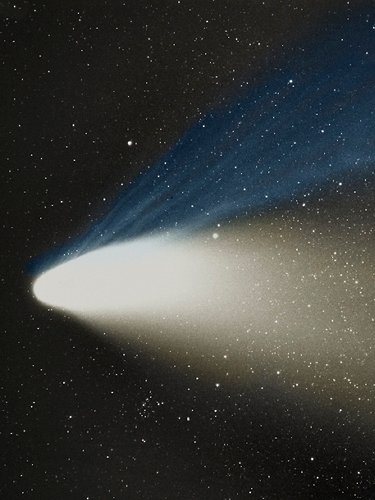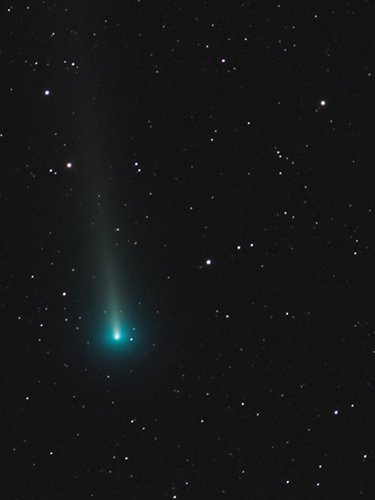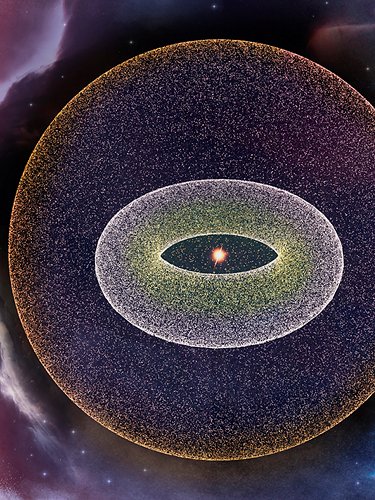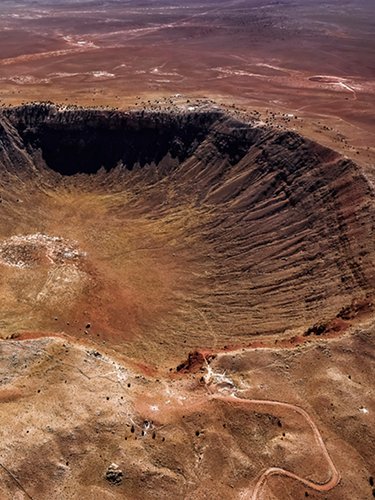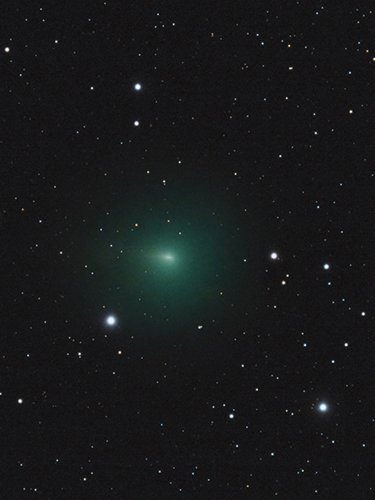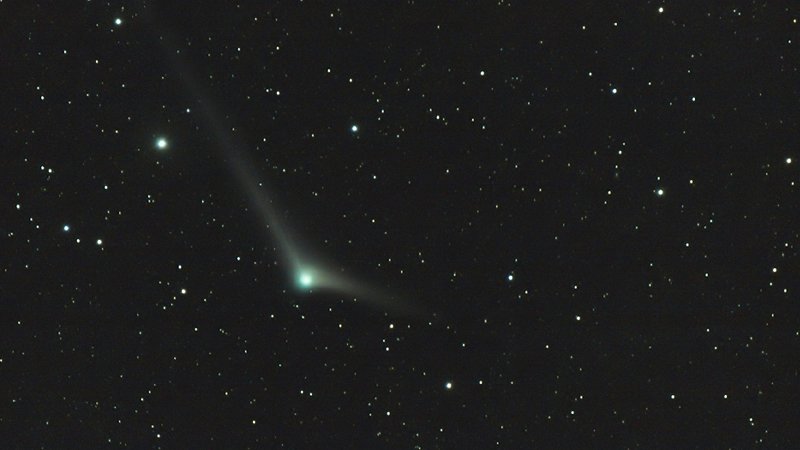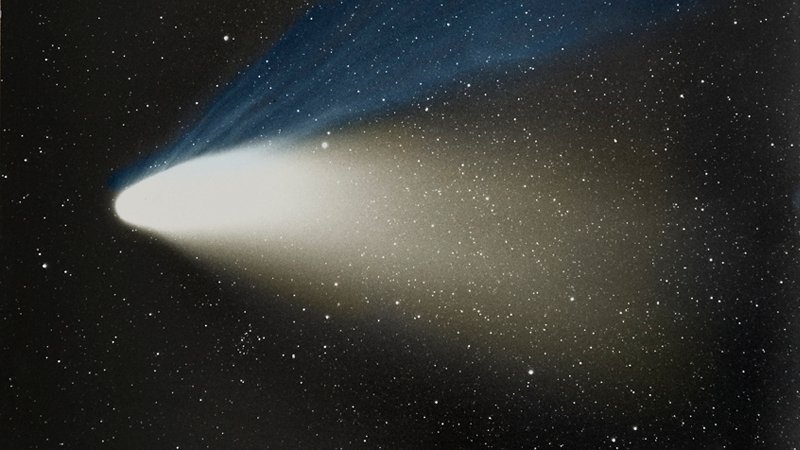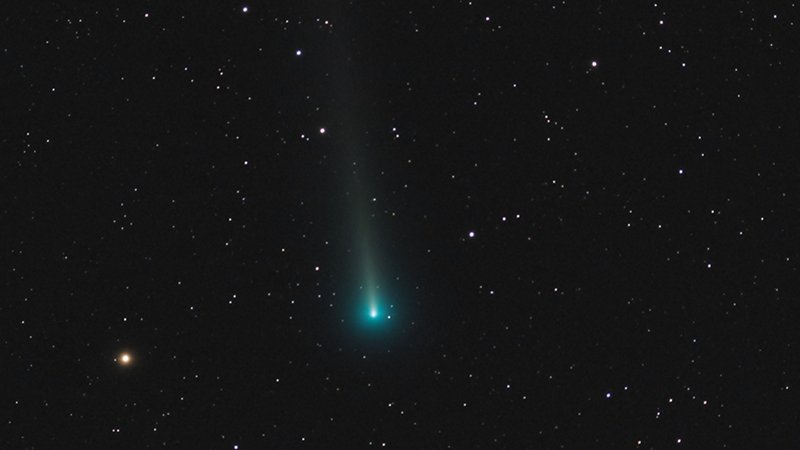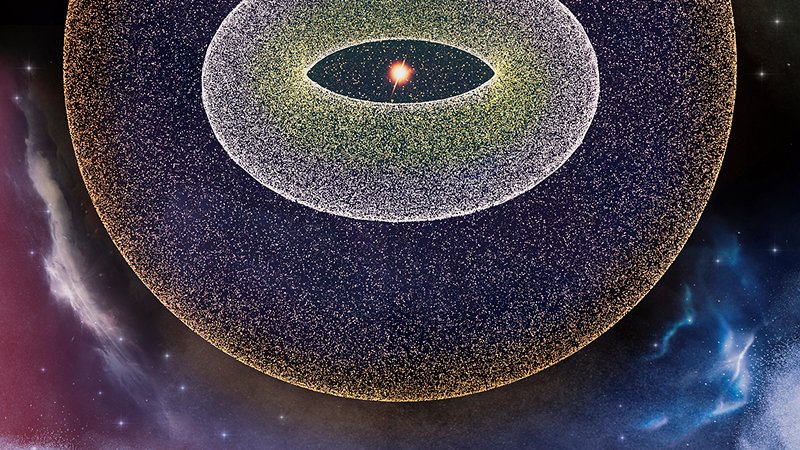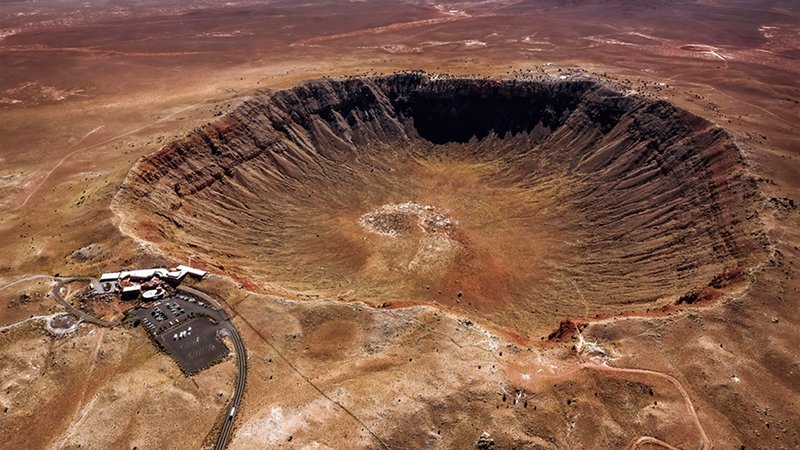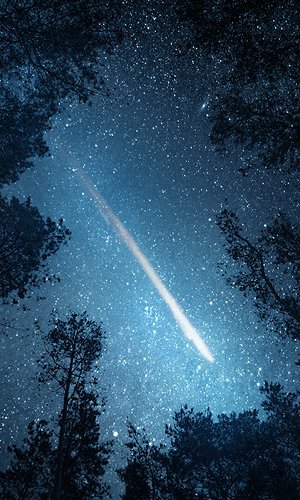Comets are celestial objects made of ice mixed with carbon dioxide, methane and dust. When a comet gets close to the Sun its nucleus heats up and evaporates. Solar wind pushes the vapours released by the nucleus into space: this is why the tail always stretches out on the side facing away from the Sun. It is the tail that makes these objects visible and beautiful, and the tail is what gives it its name: in ancient Greek kométes means “with hair”. Comets came into being together with the solar system. In the incandescent centre of the primordial nebula, the heavier materials gave rise to planets, while in the outer reaches the temperature was low enough to allow the water to freeze and aggregate in large icy nuclei. If compared with planets, the nuclei of comets are minute, but their tails can reach incredible dimensions sometimes equivalent to the diameter of the Sun.


